
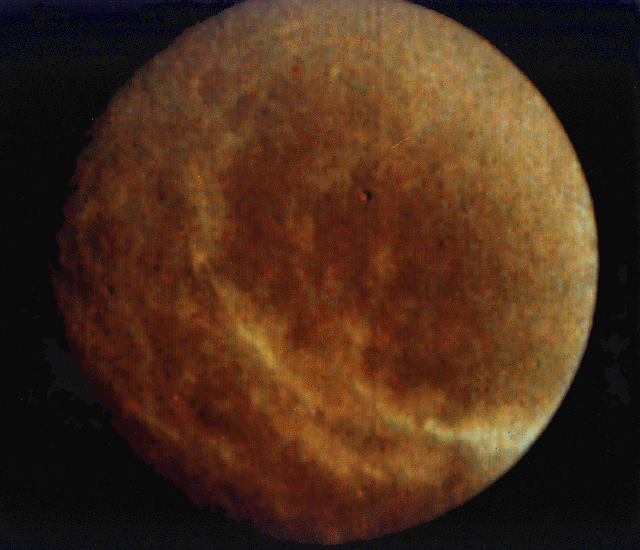
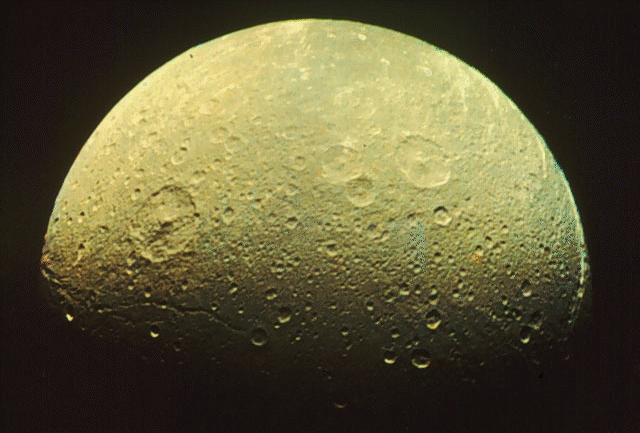
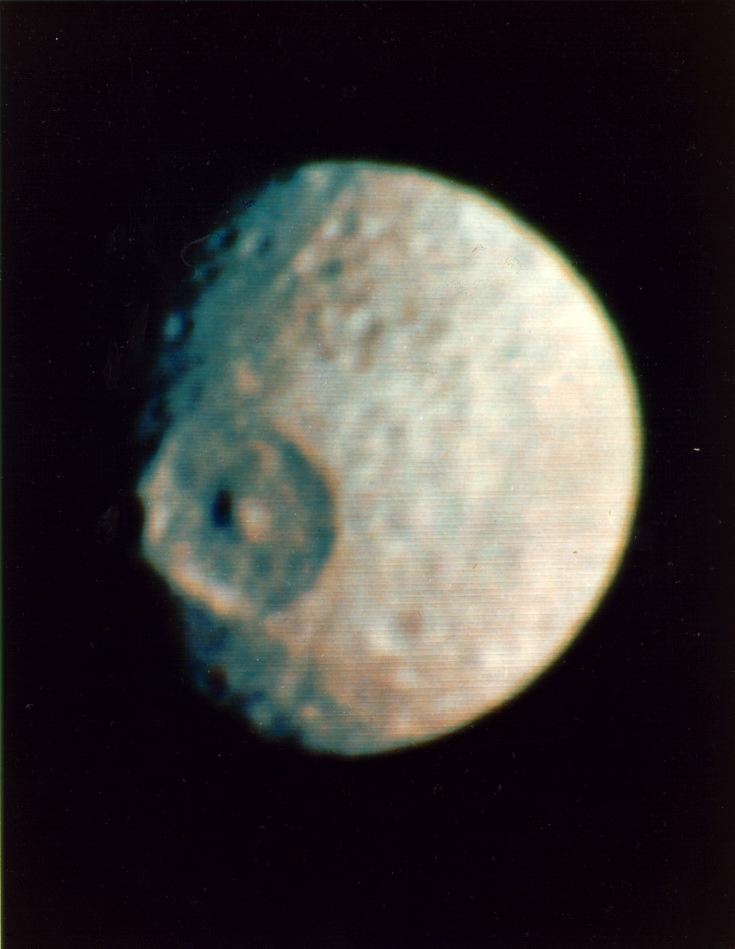
This crater is particularily amazing because of its sheer size in proportion to the moon itself. From observing this crater, scientists speculate that the inner satellites of the outer planets have, in fact, been shattered and gravitationally reassembled many times in their geologic history. The crater Herschel's walls are approximately 5 km (3.2 mi) high, parts of its floor measure 10 km (6.2 mi) deep, and its central peak rises 6 km (3.7 mi) above the crater floor!
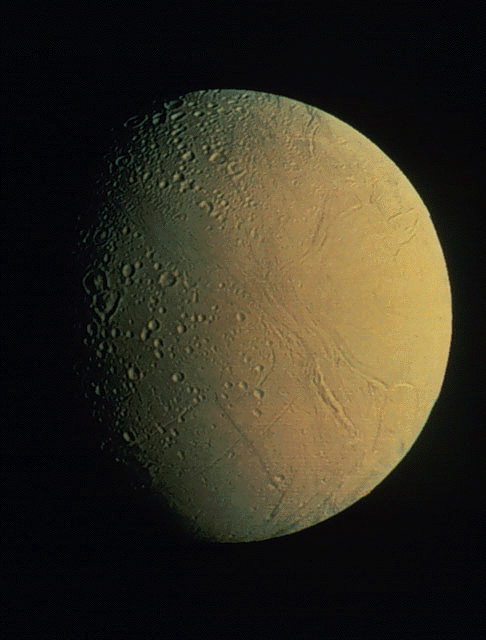
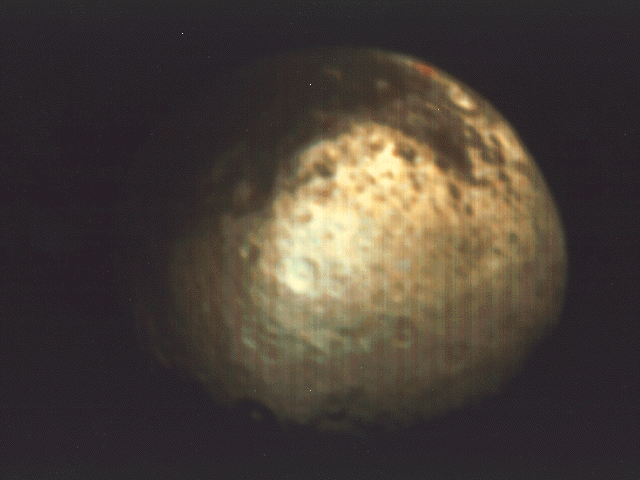
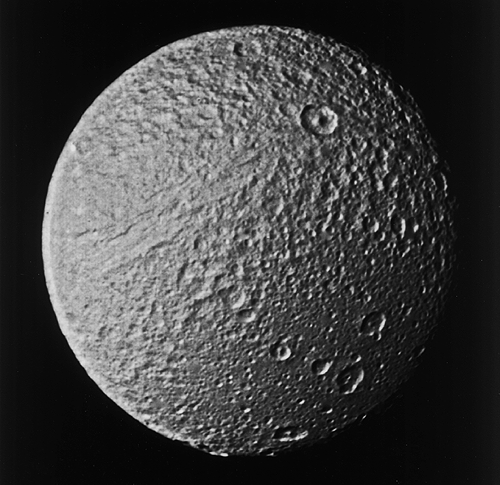
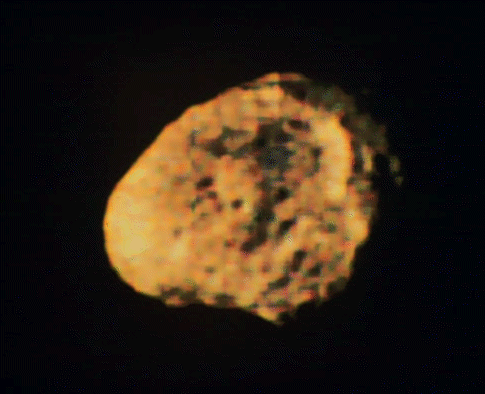
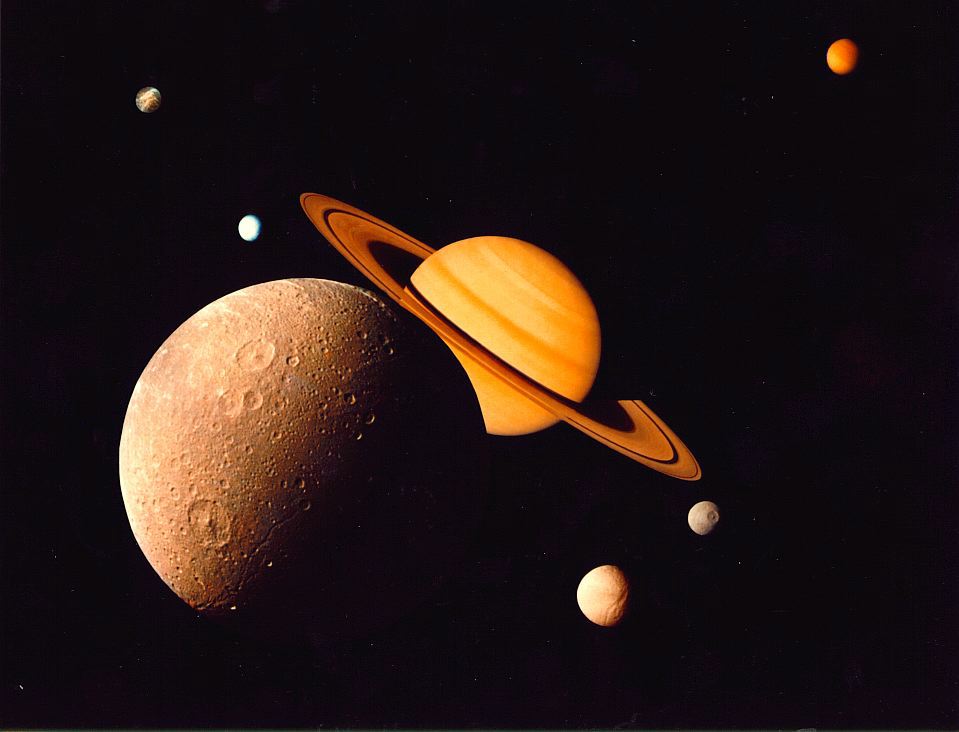
 Back To Saturn
Back To Saturn